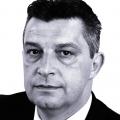
WORLD Heritage status could be sought for the Isle of Skye and charging may begin at some of the most popular sites as part of new plans to improve infrastructure and tourism.
Highland Council has published a paper setting out ways of easing pressure on tourist hotspots and upgrading services such as car parks.
It sets out a range of short to long-term projects to ease pressure on the island, which has seen a significant increase in visitors in recent years.
Among the suggestions is to seek dual World Heritage site listing to recognise its landscape and wildlife and also its culture.
Scotland already has six places with the Unesco listing including the Forth Bridge, St Kilda and Neolithic Orkney.
Highland Council’s paper claims the status would provide it with long-term funding for conservation, better access to global project management resources and and an enhanced identity.
According to the paper, infrastructure issues on the island came to a “watershed” in 2017 with the “exponential growth” in tourist numbers.
Skye is Scotland’s second busiest visitor destination, with sites such Storr and Quirang currently having no entrance fee.
Figures in the paper show there were 1.3 million visitors to the island and Lochaber in 2014, but the council said issues came to a “watershed” this year.
The paper highlights problems with toilets, parking, wi-fi, roads, 3G and 4G phone reception, public transport, wet weather facilities, affordable housing, off-peak events and distribution costs.
It added that tourism infrastructure issues on Skye and neighbouring Raasay “came to a watershed” this year, with the “exponential growth in tourist numbers colliding with an infrastructure that is no longer fit for purpose”.
Councillor Ronald MacDonald, who co-wrote the paper, with Donald MacRae, said: “The essential issue at the heart of the ‘Skye Tourism problem’, and this is a general point that may be applied to all tourist areas, is that, at the point of entry, key tourist spots are in general essentially ‘free’ to enter.
“Free entry to outdoor areas, or indeed the free price of any good or service, typically leads to congestion (excess demand) and queuing issues (i.e. in terms of parking) and can lead to serious issues of erosion and spoil of the sites themselves and the supporting infrastructure.”
“So part of the solution has to be how one makes such operators recognise the implications they are having – this may be by price (i.e. some form of licensing), some form of quota involving parking and or organised transport to key areas (which happens in key international tourist sites such as Machu Picchu, Peru) Furthermore, the motorhome hire companies must also understand the effects of promoting van hire on the back of our iconic beauty spots.
“How do we embrace their contribution towards the maintenance and upkeep of our area? This type of visitor to Skye is brand new, was totally unpredicted and is a big issue due to the sheer numbers of motorhomes now on the roads. In the past, towed caravans were left at camping sites while visitors toured the island in their vehicle.”
The number of visitors to Skye has been increasing in recent years.
The growing popularity of Skye has seen its population rise from 10,000 to more than 60,000 in recent weeks, putting strain on infrastructure and forcing visitors to sleep in cars.
Many of Skye’s attractions, such as the fairy pools near Glen Brittle and the Old Man of Storr, can only be accessed by travelling down single-track roads, which are being choked by cavalcades of coaches and motorhomes.
The Old Man of Storr is famous as the backdrop for several movies, including the Hollywood sci-fi blockbuster Prometheus. Rapper Kanye West also flew into Skye to use the rocky outcrop as a background for a single last year.



Why are you making commenting on The Herald only available to subscribers?
It should have been a safe space for informed debate, somewhere for readers to discuss issues around the biggest stories of the day, but all too often the below the line comments on most websites have become bogged down by off-topic discussions and abuse.
heraldscotland.com is tackling this problem by allowing only subscribers to comment.
We are doing this to improve the experience for our loyal readers and we believe it will reduce the ability of trolls and troublemakers, who occasionally find their way onto our site, to abuse our journalists and readers. We also hope it will help the comments section fulfil its promise as a part of Scotland's conversation with itself.
We are lucky at The Herald. We are read by an informed, educated readership who can add their knowledge and insights to our stories.
That is invaluable.
We are making the subscriber-only change to support our valued readers, who tell us they don't want the site cluttered up with irrelevant comments, untruths and abuse.
In the past, the journalist’s job was to collect and distribute information to the audience. Technology means that readers can shape a discussion. We look forward to hearing from you on heraldscotland.com
Comments & Moderation
Readers’ comments: You are personally liable for the content of any comments you upload to this website, so please act responsibly. We do not pre-moderate or monitor readers’ comments appearing on our websites, but we do post-moderate in response to complaints we receive or otherwise when a potential problem comes to our attention. You can make a complaint by using the ‘report this post’ link . We may then apply our discretion under the user terms to amend or delete comments.
Post moderation is undertaken full-time 9am-6pm on weekdays, and on a part-time basis outwith those hours.
Read the rules hereComments are closed on this article